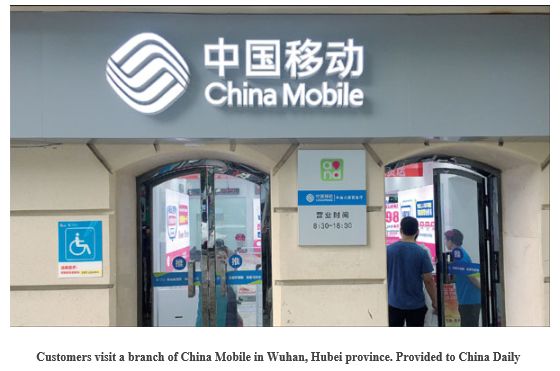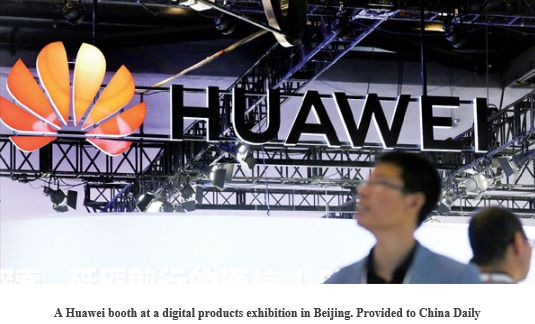
By Andrew Moody | China Daily Europe | Updated: 2018-10-12
President Xi emphasizes that State-owned and private enterprises are both crucial to China’s economy
He said during a recent visit to Northeast China that it was wrong to “bad-mouth” China’s State-owned enterprises. The president was speaking to workers at Liaoyang Petrochemical, a subsidiary of China National Petroleum Corp, the State-owned gas and oil giant on Sept 27.
It was not the first time he has stressed the importance of SOEs to China’s economy. He also did so in his report to the Communist Party of China’s 19th National Congress in October last year.
On the same visit to Liaoning province, Xi also pledged the Party’s “care and support” for the private sector, which has been beset in recent months by funding issues.
Xi’s comments have sparked a renewed debate about how the public and private sectors contribute to the overall economy.
Many commentators, particularly those outside China, award the private sector the greater credit for China’s economic transformation since the reform and opening-up policy was launched 40 years ago this year.
Yet many SOEs, particularly the 102 national ones supervised by the State-owned Assets Supervision and Administration Commission, are among some of the world’s most powerful companies, including CNPC and such giants as telecom operator China Mobile.

The combined revenues of the SASAC companies – 23.4 trillion yuan ($3.38 trillion; 2.91 trillion euros; £2.55 trillion) as of 2017 – are bigger than the entire economies of either the United Kingdom ($2.94 trillion) or France ($2.93 trillion).
In any debate about China’s economy, it is also important not to overlook the role of State direction with central planning still remaining key – with the government publishing comprehensive and detailed five-year plans, which are a blueprint for action, and also launching initiatives such as Made in China 2025, steering the country to make breakthroughs in key new technologies.
Edward Tse, founder and chief executive officer of Gao Feng Advisory, a management consultancy, who has advised Chinese SOEs and leading private enterprises, believes Xi was right to emphasize that China now has a “dual track” economy.
“Both parts of the economy contribute in their own ways. The SEOs have had to deal with a lot of issues, such as overcapacity, and also problems concerning corruption, but they have also played a major role driving forward the economy,” he says.
Tse, author of China’s Disruptors: How Alibaba, Xiaomi, Tencent and Other Companies Are Changing the Rules of Business, says that one only has to look at China’s high-speed rail network to see how effective SOEs can be.
In a little more than a decade, the network – spearheaded by China Railway Corp, an SOE – is the largest in the world, with 27,000 kilometers of track, enabling passengers to travel the length and breadth of the country at speeds of up to 300 km/h.
“No private company would have been able to do this in such a short period of time. In the private sector, everything has to be measured in commercial returns, and because of the cost, high-speed railway would not have been able to deliver them. Yet you cannot measure the contribution of this network in terms of profit and loss, because it has delivered such major benefits to the wider economy and society.”
China’s State sector, however, is now the smaller part of the overall economy. The private sector contributed more than 60 percent of China’s GDP in 2017, according to the All-China Federation of Industry and Commerce.
It also brought in more than half of China’s fiscal revenue, generated 80 percent of jobs and contributed 70 percent of all technological innovation and new products in the country, according to the federation.
Zhu Ning, professor of finance at Tsinghua University, says China’s private sector has played a significant role since reform and opening-up.
“It has obviously delivered the bigger share of economic growth since 1978, because the private sector didn’t really exist before then. Its contribution has been quite enormous,” he says.
“We now find us having this renewed debate of the relative importance of the State and private sectors because it is perceived that the environment for the private sector has become more difficult over the past three years.”
Zhu says this is partly a result of regulators clamping down on wealth-management products – a major source of funding for some enterprises – in order to maintain the financial stability of the overall economy.
He says another problem is that a number of listed private companies have had funding difficulties because of falling stock market values. The Shanghai Composite Index, China’s main stock market index, has fallen by nearly 25 percent, from 3,559.47 on Jan 24 to 2,721.00 on Oct 10.
“A typical situation might be a private company that was 60 percent owned by its private owner. This owner may have funded the company by using shares as collateral. With the stock market in China falling, the owner no longer has sufficient collateral. As a result, the only way out may be to sell to a State-owned company. The deals are often brokered by the banks,” he says.
Nicholas Lardy, senior fellow at the Washington-based Peterson Institute for International Economics, agrees that private companies in China are facing an increasing squeeze.

“Private firms are being crowded out, their share of bank lending and investment has been falling, and from the beginning of 2017 to now, the growth of value added of private industrial firms has lagged behind State firms for the first time in 40 years.”
Lardy, author of Markets Over Mao: The Rise of Private Business in China, believes this is worrisome for China’s economy, since SOEs are not as productive as the private sector.
“State enterprises are an increasing drag on China’s growth, since their productivity lags that of private firms by an increasing margin.”
George Magnus, a leading commentator on China’s economy and an associate at the Oxford University China Centre, says Chinese financial authorities have been trying to address the funding problem that private Chinese companies now face.
“There is no doubt they are less favored when it comes to loan financing, credit terms and other forms of preferential treatment that SOEs enjoy,” he says.
“There have been attempts this year and also before to coax banks into lending more to private companies and ease credit terms for export firms and small and medium-sized enterprises.”
Magnus, author of the recently published Red Flags, which is about China’s economy, says not all the private sector is experiencing this funding shortage.
“It is a mixed picture. Private firms in some areas are finding credit more difficult, but tech companies, on the other hand, and unicorns (companies with a high value), seem to be doing fine.”
Jeffrey Towson, managing partner of investment and advisory company Towson Capital and a professor of investment at Peking University’s Guanghua School of Management, agrees that the startup sector is far from being starved of funds.
“There is tons of capital available in China. The venture capital industry in China is quite buoyant. There is a lot of venture capital money coming from the three tech giants, Tencent, Alibaba and Baidu,” he says.
Wang Qing, a professor of marketing and innovation at Warwick Business School in the UK who also is a guest professor at Zhejiang University in Hangzhou, says there is a danger of the current debate about the relative merits of the State and private sectors in China becoming too polarized.
“Every country has a slightly different model in achieving a balance between the state-owned and private sectors of the economy. India, for example, doesn’t have many state companies because the state is quite poor. However, in the hospitals sector, the state will dictate that a certain percentage of the beds have to be free. So the state has influence in other ways. There is no one-size-fits-all,” she says.
The State’s role in China’s economy is also not restricted to the ownership of enterprises. Since reform and opening-up, the State has played an active role in the development of private enterprises.
In the 1980s, it set up special economic zones in the country’s coastal regions, and these were a catalyst in China’s becoming the manufacturing workshop of the world.
The country abounds now with science and industrial parks as well as free trade zones aimed at fostering enterprises.
National strategies such as Made in China 2025 and China’s aim to be a global technology leader by 2035 also have spurred action.
Tse at Gao Feng Advisory says the State, through such initiatives, has played a big role in transforming the economy.
“Deng Xiaoping didn’t say let us forget about the State, and if you go back over the various eras since his and through Jiang Zemin and Hu Jintao to President Xi, the State has played a major role in giving direction.”
Towson at Guanghua says the overwhelming advantage of China’s State-directed economy is its decisiveness.
“This has been demonstrated time and time again, whether it is developing renewable energy, electric cars, a major sports industry or ambitious initiatives such as Belt and Road or the setting up of the Asian Infrastructure Investment Bank. All these have happened very quickly, and they are a tremendous engine for innovation and entrepreneurship. When the State decides to do something in China, the State decides to do something.”
Peter Williamson, professor of international management at Judge Business School at Cambridge University and an expert on Chinese innovation, says the value of strategies such as Made in China 2025 is in coordinating efforts.

He says that in the past, national and provincial governments, research initiatives and the companies themselves, whether State-owned or private, struggled to work together.
“State-driven initiatives around climbing the technological ladder and Made in China 2025 are needed to make things work more smoothly, improve productivity in innovation, and accelerate progress,” he says.
“If China can get this institutional framework right, with SOEs, policymakers and private companies working in partnership, that will prove a powerful combination.”
China is not the only country where there is a debate about the relative roles of the state and private sectors.
The UK was a trailblazer in privatizing nationalized industries under the Conservative governments of Margaret Thatcher in the 1980s.
Yet Jeremy Corbyn, leader of the Labour Party, the UK’s main opposition party, pledged at his party’s annual conference in Liverpool in September to renationalize railways and water utility companies.
Magnus says this turnaround is more down to changing attitudes of the “justice and fairness” of ownership after the disappointment of the financial crisis, and not about seeing China’s SOEs as a template.
“There is a lot of navel-gazing going on in the West as to what the right mix should be. I am sure there will be a shift to more public ownership and away from private, however, in the years ahead.”
In China’s case, however, Tse at Gao Feng Advisory says he believes that Xi is clearly right to acknowledge the contribution of both the State and private sectors.
“Of course we need to encourage the sort of entrepreneurship and innovation that the private sector has delivered, but we also need to give due recognition to the State sector and the role that it has played in China developing so rapidly over the past 40 years.”

